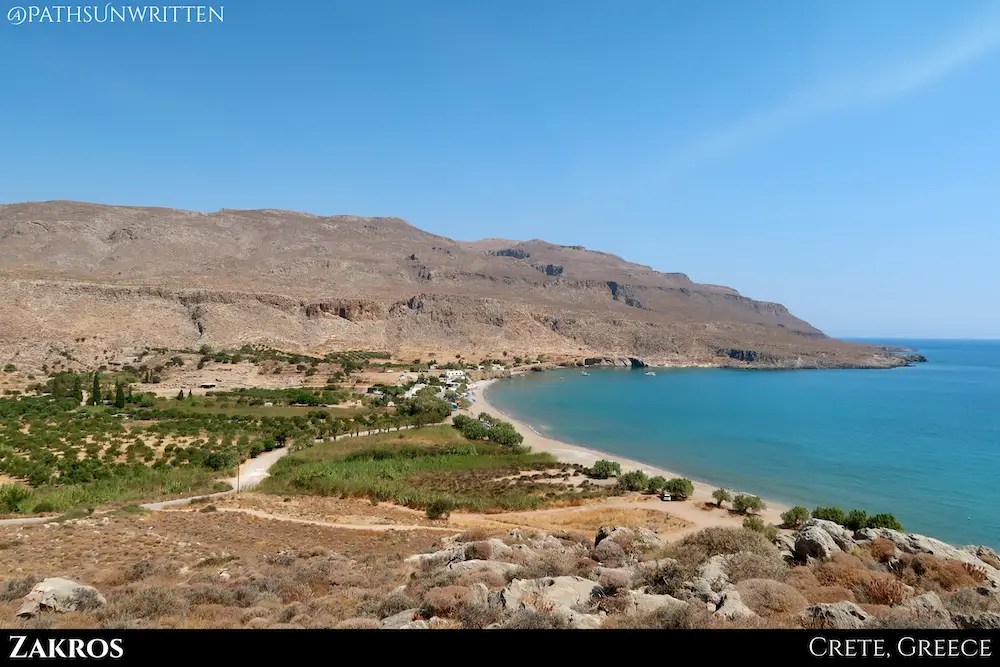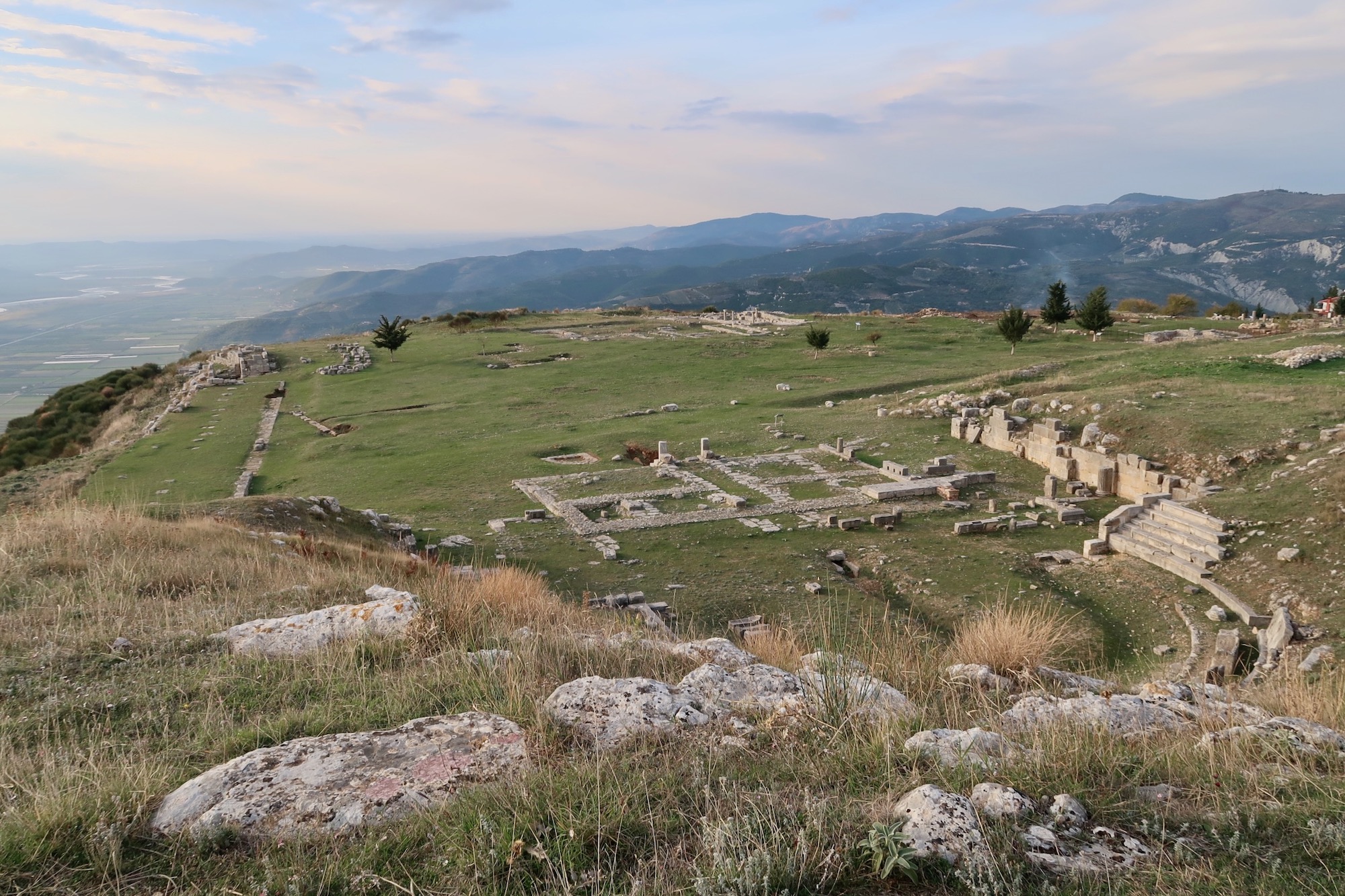
As 2021 brought the entire world into the second year of the COVID pandemic, countries began to diverge more and more in the policies they adopted toward entry, quarantine, and travel. Some, like Thailand, where I had spent all of 2020, continued to keep their borders strictly sealed for most of the year. Others, like the EU, began to cautiously re-open with stronger, but manageable, entry restrictions in place.
Navigating these restrictions became the tricky part. They were constantly changing throughout the year as vaccines became more widely available and new virus variants popped up.
After returning to the United States at the end of 2020, I
Contents
Honorable Mention: Central Crete, Greece

Crete just feels ancient. It was home to a civilization already in ruins for 1000 years when the Classical Greeks began to explore the island and, even today, it feels like a step back in time from the cities on the mainland. Nowhere is this more evident than driving through the inland mountains.
Small villages perch on mountain slopes, some with roads almost too narrow for even small cars to comfortably fit through without skimming buildings or even a cliffside. At rare, special spots, you are treated to the stunning view of the Mediterranean Sea on both the northern and southern horizons of the narrow island.
10) Athens, Greece

Athens was the very first foreign city I ever traveled to on my own, and returning had been a longstanding dream of mine since 2005. Heading there after 2 months in Southern Greece, the city proved much more accessible than the first time I had visited. With the quirky Psyri neighborhood as my base, I spent much of my visit retracing places I remembered from my original visit.
9) Quepos, Costa Rica

Port towns have always had more character than beach towns in my eyes. And, while Costa Rica’s famous Manuel Antonio Beach was just 20 minutes away by car or bus, there was more to do and see in the port town of Quepos. Many of the restaurants had limited selection and hours, completely understandable with the reduced tourism. However, I was staying right next to a great supermarket.
The town’s shoreline along the harbor was developed with a pleasant walking area — not quite a boardwalk, but that sort of promenade. Placed along the coastal Highway 34, Quepos also made a nice base from which to explore the southern coast, including Dominical, Uvita, and the ancient Stone Spheres near Palma Sur.
8) Falasarna/Zakros, Greece


These two beach towns on opposite ends of Crete are tucked away in their own dramatic coastal mountain valleys. Both are home to ruined ancient cities (like a good deal of Crete) and chilled, simple beachfront accommodations and restaurants. I personally found Zakros to be the more peaceful of the two with a sort of “get away from it all” sort of vibe, and that would be my first choice to return to.
7) The Southern Albanian Coast

Early accounts I read of the Albanian road system had me a bit concerned, but they ended up being quite well-developed and easy to figure out. Quite honestly, the worst roads I encountered in the whole country were on the outskirts of the capital, Tirana. That said, one of the more difficult paths was the coastal road leading south from Vlore to Orikum due to a heavy amount of construction immediately south of Vlore.
Once past Orikum, the roads improved and the natural scenery of the sheer mountains along the coast was an amazing sight. Small towns built into the cliffs around abandoned castles were a pleasure to drive through and should’ve warranted a stop, unfortunately, I was pressed for time to get to Ksamil.
6) La Fortuna, Costa Rica

Fortuna is often the first stop for travelers in Costa Rica. A short drive from the country’s San Juan International Airport, the small town is the main gateway to the mountain and jungle treks that the country is famous for. While I wasn’t there for nature treks, I loved the visual of Arenal Volcano looking over the western horizon at all times.
The town itself served as a nice base for working and exploring the central region of Costa Rica. There was a coworking space, a nice selection of restaurants, and an easily available car rental.
5) Samara Beach, Costa Rica

After a couple of weeks in the height of both winter and covid in the United States, the remote tropical town of Samara Beach was my first stop of 2021 and my first instance of actually traveling without a home base in over 3 years.
What began as a month-long stay in the resort town turned into 3 months. With a convenient coworking space, a great selection of restaurants, and a friendly brewpub, Samara Beach provided a welcome change of pace leading into what would be a couple of years of moving around nonstop.
4) Sarajevo, Bosnia and Herzegovina

Bosnia was my first European country outside of Greece. Although drawn here specifically by the ridiculous story of a mountain being called a pyramid, the city of Sarajevo was the best part of my visit to the country. It’s a rough city in places, but extremely lively and amazingly enjoyable to walk around.
Set in a mountain valley along a narrow river, the cityscape quickly gives way to beautiful hills with homes built along steep slopes. The walk along the river brings you to the historic area of the city that, while reminding me a lot of the touristy “ancient towns” of China, presented a small glimpse of Turkish-Ottoman culture that I’d never been exposed to before.
3) Tirana, Albania

Directly above Greece, Albania was my last grasp at mainland Europe before winter rolled in. During the summer in Greece, I met several people who had raved about both their time in the country and how fun a city Tirana was.
Both Sarajevo and Tirana share a similar geography, with the city centered on a narrow river in a mountain valley. With this in the back of my mind, I keep comparing Tirana with Sarajevo, where I had just come from. After a month there, I came to the odd conclusion that while not as interesting as Sarajevo, Tirana is a much more pleasant city overall.
Everything here is walkable with designated bike lanes all over the city. There is a burgeoning international food scene. And they have willingly embraced their troubled post-Soviet history in a unique way that I admire, making museums, art exhibits, and even shopping centers out of it.
2) Mochlos, Greece

This tiny speck on the northern coast of Crete immediately became one of my favorite spots in Greece. The town is located at the far end of a small coastal mountain range, making the drive there somewhat challenging. However, this small tip of Lange is a picturesque little cluster of buildings hugging the Mediterranean with excellent restaurants and perfect sunsets for a glass of wine.
As an added bonus, there is a small island just 180 meters offshore that contains a ruined Minoan settlement. Scaling the entire island hillside facing the mainland (would Crete be the mainland in this case?), some estimates place this Minoan settlement to be as big as the palace centers at Zakros or Phaestos.
A local restaurant owner runs tourists over on his personal boat for a modest fee.
1) Heraklion, Greece

“This is a place I could see myself living for a while,” is a direct quote about Heraklion from a written journal I kept way back in 2004 during my first trip to Greece. That sentiment was not let down on my return almost 20 years later, despite both visits beginning with a similarly dreadful introduction to the city in the form of accommodation.
Once I actually got settled into proper accommodation, I enjoyed every day in the city. Despite Chania being more popular overall, I find the old center of Heraklion is much more pleasant to explore. The mazes of streets were plentiful enough that I could always find something new, but not so expansive that I became lost or disoriented.
With Heraklion’s coastal views, nearby Minoan ruins at Knossos, and ease of transport to anywhere else on Crete, the city leapfrogged its way back to being one of my favorite places in the world and, like Chiang Mai the year before, a city that I would love to try living.













